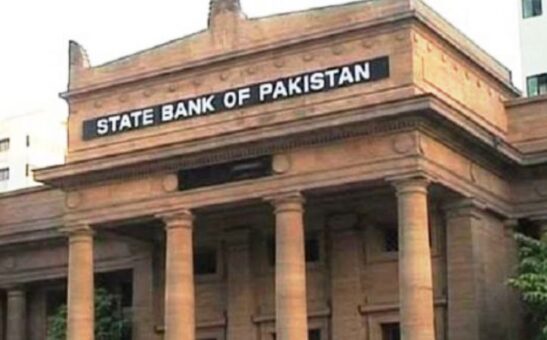KARACHI – The State Bank of Pakistan (SBP) has released the foreign exchange rates for October 25, 2022, shedding light on the current status of the Pakistani Rupee (PKR) against major international currencies.
These rates, determined on the basis of the weighted average rates of commercial banks, play a pivotal role in influencing trade, investments, and overall economic activities.
As of October 25, 2022, the buying and selling rates for select foreign currencies in PKR are as follows:
• UAE Dirham (AED):
• Buying: 59.7124 PKR
• Selling: 59.8200 PKR
• Australian Dollar (AUD):
• Buying: 138.6262 PKR
• Selling: 138.8809 PKR
• Canadian Dollar (CAD):
• Buying: 159.8848 PKR
• Selling: 160.1772 PKR
• Swiss Franc (CHF):
• Buying: 218.8207 PKR
• Selling: 219.2249 PKR
• Chinese Yuan (CNY):
• Buying: 30.0028 PKR
• Selling: 30.0534 PKR
• Euro (EUR):
• Buying: 216.2560 PKR
• Selling: 216.6671 PKR
• UK Pound (GBP):
• Buying: 247.3426 PKR
• Selling: 247.8105 PKR
• Japanese Yen (JPY):
• Buying: 1.4718 PKR
• Selling: 1.4745 PKR
• Saudi Riyal (SAR):
• Buying: 58.3284 PKR
• Selling: 58.4360 PKR
• US Dollar (USD):
• Buying: 219.1657 PKR
• Selling: 219.5818 PKR
The exchange rates provided by the SBP are a crucial indicator for businesses involved in international trade, investors, and individuals conducting cross-border transactions. These rates are subject to fluctuations influenced by economic indicators, geopolitical events, and market sentiment.
The USD to PKR exchange rate, a key benchmark for global transactions, stands at 219.1657 PKR for buying and 219.5818 PKR for selling on this specific date. The movement in exchange rates has far-reaching implications for the economy. A stronger PKR may make imports more affordable but could pose challenges for exporters. Conversely, a weaker PKR might boost exports but may increase the cost of imported goods.
The SBP’s commitment to regularly updating these rates ensures transparency in the foreign exchange market, facilitating informed decision-making by businesses and investors. Central banks, including the SBP, often intervene in the foreign exchange market to stabilize their national currencies and maintain economic stability.
Economic analysts will scrutinize these rates to identify trends, potential impacts on the domestic economy, and offer insights into the broader economic landscape. As the global economic environment continues to evolve, the SBP’s timely and accurate information on foreign exchange rates remains essential for navigating the complexities of international finance and trade.
